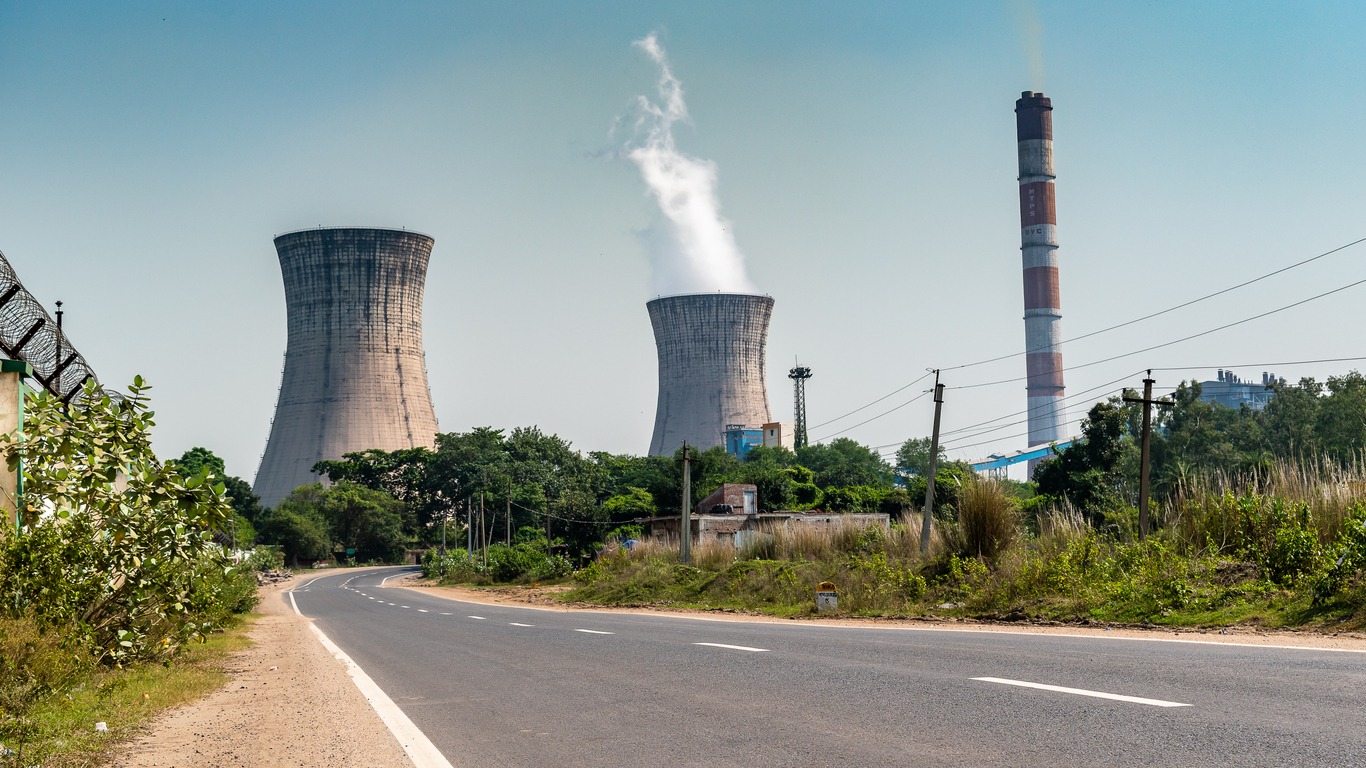Assessing the Promise of Small Modular Reactors from an Indian Perspective
CENTRE FOR AIR POWER STUDIES
APLN Senior Research Adviser Manpreet Sethi assesses the advantages of Small Modular Reactors (SMRs) and the challenges that they are likely to face, in the context of India’s energy mix.
There is a palpable sense of enthusiasm around the idea of ‘Small Modular Reactors’ (SMRs). These are being seen as a solution to some of the persistent challenges of long construction times and high economic costs associated with traditional nuclear reactors. A race is underway within the nuclear industry, backed considerably by governments, to work on new designs and manufacturing processes that are expected to prove their commercial viability and make them operational within a decade. How realistic is this estimate? What kind of advantages will SMRs offer? What challenges are they likely to face? This issue of the column undertakes an assessment of SMRs, especially in the context of India’s energy mix.
What are SMRs?
As the name suggests, SMRs would have two main attributes– small and modular. In terms of size, they are to be fission reactors with a capacity of about 300 MWe or less. In terms of modularity, they are envisaged to be amenable to being centrally manufactured at a factory and then transportable to the desired site for assembly/installation. Much like a machine, and quite unlike the traditional nuclear reactors that are built on site, SMRs are expected to arrive at a site, be plugged in and start producing electricity. They would also offer the possibility of the addition of multiple similar reactors when desired. Also, these could be placed on land, on ships for off-shore deployment (which are known as floating nuclear power plants), or even in an underground or submerged environment.
Over 70 SMR designs are being developed in different countries around the world today. At different stages on the drawing board, these designs range from slightly modified versions of existing reactors to those involving completely new technologies. Staying abreast of the high level of activity around the new ideas, the International Atomic Energy Agency (IAEA) has set up the SMR Regulators’ Forum to help countries share information on issues of common concern. It published a Technology Roadmap for Small Modular Reactor Deployment in 2021 that identifies, evaluates and promotes collaboration and knowledge sharing amongst technology developers, industry, users and regulatory bodies.
Expected Advantages of SMRs
Speed of Installation and Cost Savings
One of the main advantages of SMRs is seen in their ability to be manufactured as pre-fabricated and pre-tested modules that can be easily assembled/installed on site after being transported conveniently. Modularity in manufacturing and assembly is expected to reduce construction time. The idea, in fact, is to compress a large technological project into a relatively easy installation of a pre-fabricated product of standardised quality. A study in this regard has suggested that SMRs can reduce construction time by 3.5 years in comparison to the average 6.5 years required as of now.[1] Reduced gestation periods are then expected to reduce capital costs too, thus increase the economic competitiveness of the reactors.
Enhanced Safety and Security Features
Given the new technologies being incorporated by SMRs, these are expected to include enhanced safety and security features. On the safety front, the reactors are being designed to incorporate modern passive safety systems that minimise the need for human intervention in case of emergencies. On nuclear security, they would incorporate the concept of “security by design” to address concerns of sabotage, theft, attacks and proliferation. Since many of these designs are expected to operate for prolonged periods without the need for refuelling, there would be related benefits of reduced risks of transportation of nuclear materials too.[2]
Flexibility of Installation and Siting
SMRs would provide flexibility in siting options, especially their placement in remote, isolated areas that are currently dependent on diesel generators. Given their compactness, they are envisaged to need less land, as well as concomitant emergency zone requirements. Addition or removal of new modules, as considered necessary, would add to the flexibility advantage.
Baseload Power in Support of Renewables
Nuclear power has a major advantage of being a baseload source of electricity. With the current trend favouring a rapid deployment of renewable energy, SMRs could complement these sources to address their disadvantage of intermittency. So, SMRs could supplement solar, wind, small hydroelectric and tidal generation to ensure a continuous supply of electricity and thus help stabilise the grid. This combination would help overcome the challenge of storage that the use of renewables still poses. It would also allow renewable energy to enjoy a low-carbon backup source instead of relying on thermal plants for handling the problem of intermittency.
Better Waste Management
Spent fuel management has been perceived as a major challenge of nuclear plants. SMRs are trying to address this by experimenting with new ideas for dealing with nuclear waste. These include fast reactor designs that would ensure higher fuel burnup and hence a lesser amount of nuclear waste generation or the travelling wave reactor design that could consume the fuel that it breeds, thereby minimising the need to remove spent fuel. Likewise, other SMR technologies have been trying to develop a thorium fuel cycle, which too could reduce nuclear waste.
Better Resource Efficiency
SMRs are also likely to offer better resource efficiency, given their comparatively smaller physical footprint. Requirement of land would be less as compared to a traditional nuclear power plant. The latter needs an emergency planning zone extending up to 16 kms around the plant. In comparison, SMRs would require just about two kms.[3] They are also expected to be time efficient in deployment as well as require lesser maintenance.
The full article can be accessed on the CAPS website here.
Image: iStock/AROYBARMAN




